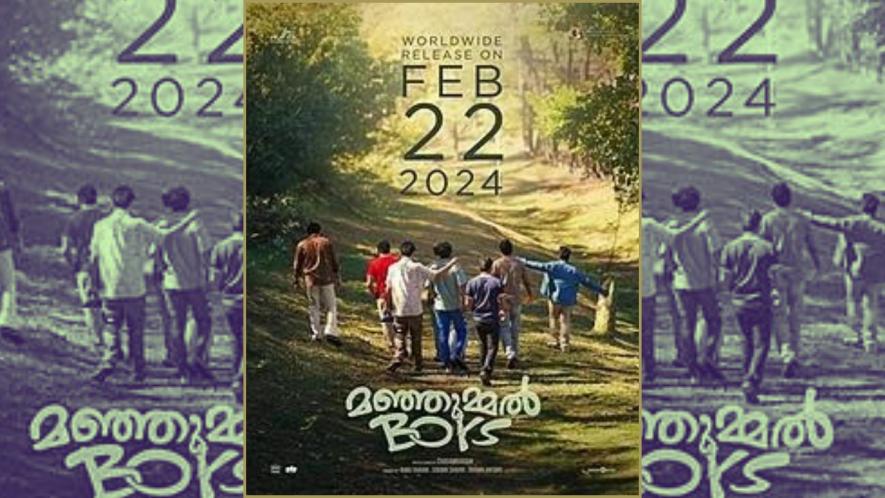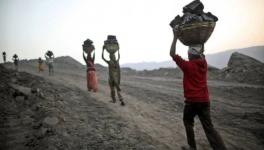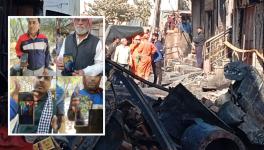Manjummel Boys: Not Just a Survival Thriller, A Story of Working-Class Heroes

Image courtesy: Wikimedia Commons
The poster of “Manjummel Boys” works as a delusion- another ecstatic movie of a group of young boys navigating youth. Soon after the trailer was released, we learned it was an adaptation of a real-life survival story that happened in 2006. Despite knowing the plot of the movie, “Manjummel Boys” keeps you gripped, at the edge of your seat, and for me, with occasional tears.
This movie was released in the ongoing wave of cinema construction in Malayalam Cinema, which is constantly revolutionising filmmaking and film politics. Recent films in the industry have made us marvel not just at the experience these movies provide in theatres but also at the intention with which they are made and their commitments to the social reality of the masses. These movies do not shy away from uncovering the brute realities we all encounter every day, yet they do not lose any aspect of what makes these stories human.
Manjummel, a periphery in the erstwhile location in Kochi, is in the movie with its partly tin-roofed buildings, emerging between industrial waste and abandoned factories. This forms the playground for not just our Manjummel Boys but for the movie at large, where we see them manoeuvre their day through the town to meet at their one-room arts and sports club in the evening. Banking on the real life of 11 young boys, earning a livelihood that barely floats their family, we see a salesman at a local optical shop, a welder, a metal worker, a worker at a factory, a contractor, a taxi driver, and a few other unemployed youths, finding leisure and brotherhood at Darshana club. The makers make no compromises with the recklessness of the boys, for it reflects their precarity. It reflects working-class families living hand-to-mouth amidst the decay and frustration of daily toil and their small but vital intervals of rest.
Hence, we have no confusion as to what a two-day trip to Kodaikanal means for them. It is an escape from the realities of a world where the more they work, the more they find themselves in debt. It is a panacea for them from life, where no manager monitors their actions, no parents dump their economic frustrations on them, and where even for two days, they are free. In fact, when the boys scream and run through the streets of Kodai when 11 of them climb on a tree barely balancing on a cliff and when they ask if they can get a woman to the local tourist guide, we see the kind of tourists we all loathe. Yet, through this, we are not just subjected to the eerie upcoming horror but also to the alienation perpetrated on the working class where the boys do not know when they can be “free” again, separated from the daily struggles of survival. The childish actions of the characters in the trip are justified by the stolen childhood of children raised in working-class families.
Much like the filmmaker, I do not believe this is a survival thriller. The film is precise on the available rescue operation tools of 2006, the meandering structure of the Guna caves, and even the deposited waste found in the cuts and crevices of the rocks. Yet what makes it beyond a movie about rescue is that the boys are not just reckless in their actions but also reckless in hope. In most such movies, we have seen a trope of a saviour with superhuman capabilities apart from the socio-economic class of the people he is saving, most likely a man executing law and justice on his own. Yet, here we see that when the people trained for our protection, from local police to fire force, stand shivering, facing the devil’s kitchen, one of the eleven plunges in, following the feeble sound of his friend stuck in the depths of the crevice. Even the only one amongst the eleven who is a contractor and employs other workers, whose social class is revealed by his crisp, clean shirts, is de-classed as he plunges head first into the crusading water, entering the pit to save his friend.
Even the people who support them are working people around Guna caves, who, despite the legends of the devil residing in the cave, come through for the eleven, challenging their own belief system. Even the meta-physical or parochial beliefs of people are not shunned in an insensitive manner. The hallucinogenic properties of excreta of bats, which is portrayed as the smell of death in the movie, is worked into the story, where the tea seller brings the boys lemons to smell in the cave to avoid evil spirits, which acts to curb the effects of the excreta. This is also strongly put forth in the contradiction of an atheist who falls into a cave from which no one has ever come out and how he becomes divine to the local people after his rescue, as the man who stared at the face of the devil and returned.
Manjummel Boys is an adaptation of a real-life story of 11 boys: Siju David, Subash Chandran, Krishnakumar, Sijulal, Sixson, Anil Joseph, Jinson, Sujith, Prasad, Abhilash, Sumesh and Sudheesh, who embark on a leisure trip which changed the course of their life. The movie stands true not just to their story but also to each one of them. The amount of time each one of them takes to accept the accident and respond to it is done not just with scientific precision but also with empathy for human behaviour. That is what makes “Manjummel Boys” not another survival story, but one of working-class superheroes who shine a torch of hope in the darkest pits of human desperation. It is a love story defying the rocky terrains of nature and power. Manithar Unarndhu kolla, Ithu Manitha Kaadhal Alla, Adhaiyum Thaandi Punithaamaanathu (For humans to understand, this is no mortal love; this love is divine.) Kudos to the Manjummel boys. May their tribe grow, for these working-class heroes alone can guide us to light from the deep, dark pits of exploitation and isolation we find ourselves in today.
(“Manjummel Boys” is a recent movie, running in theatres directed by Chidambaram, of Janeman fame, produced and acted by Soubin Shahir along with Sreenath Basi, Khalid Rehman, Jean Paul Lal, Ganapathi, Chandu, Balu Varghese, Abhiram Radhakrishnan, Deepak Parambol, Arun Kurian and Shebin Benson in lead roles.)
The writer is a research scholar at the Centre for Informal Sector and Labour Studies, Jawaharlal Nehru University. All views are personal.
Get the latest reports & analysis with people's perspective on Protests, movements & deep analytical videos, discussions of the current affairs in your Telegram app. Subscribe to NewsClick's Telegram channel & get Real-Time updates on stories, as they get published on our website.
























